
For most travelers, Höfn is merely a stopover along Iceland’s Route No.1 iconic road as this sleepy fishing town sits on the foothills of Vatnajökull, the second biggest ice cap in Europe as well as the continent’s largest national park. It might come as a surprise, but besides serving as a gateway to the nearby nature-oriented attractions, Höfn is an intriguing place to explore by its own right, boasting an ample culinary scene, a tidy center and numerous historic sites.
Surrounded by water on three side, Höfn is one of Southern Iceland’s most major towns, easily eclipsing any other settlement around. With a population of nearly 2,500 people, the town is fairly large in local terms, and as such, its modern center, around Hafnarbraut St., is home to dozens of businesses and public facilities, including a bank, a Nettó supermarket, a pharmacy, a stadium and perhaps most notably, a recreational complex with a swimming pool.
While still a far cry from the bustling streets of Reykjavik, Höfn’s low-key central district is dominated by well-kept greenery and hosts several small shops, making it a pleasant place to wander around and absorb the vibes of a typical Icelandic townlet.

Colorful flowerbeds along Hafnarbraut St.
photography by: Omri Westmark

A pride-inspired pathway
photography by: Omri Westmark
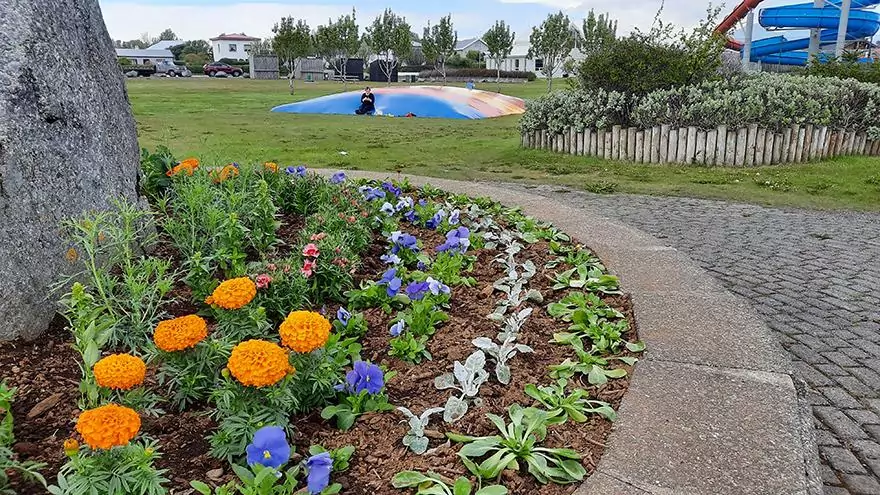
A tidy and well-kept square in front of the town's swimming pool
photography by: Omri Westmark
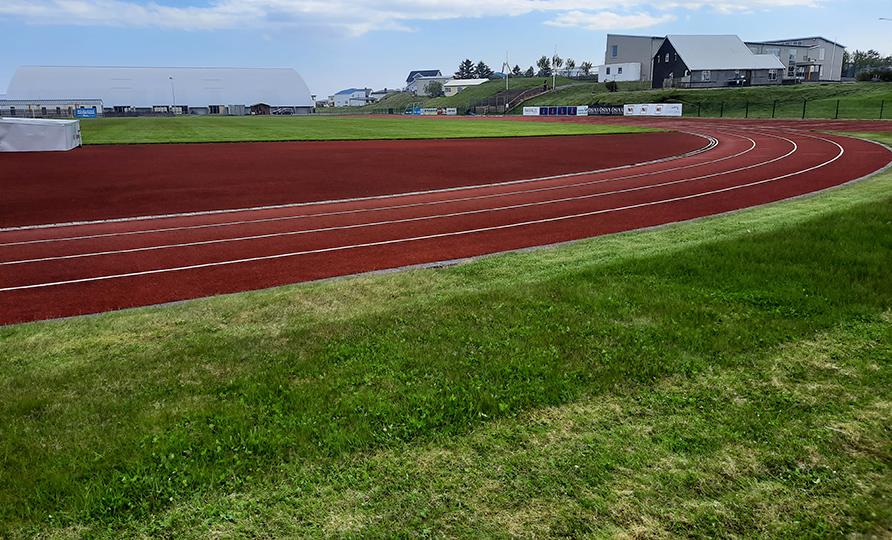
The municipal stadium
photography by: Omri Westmark
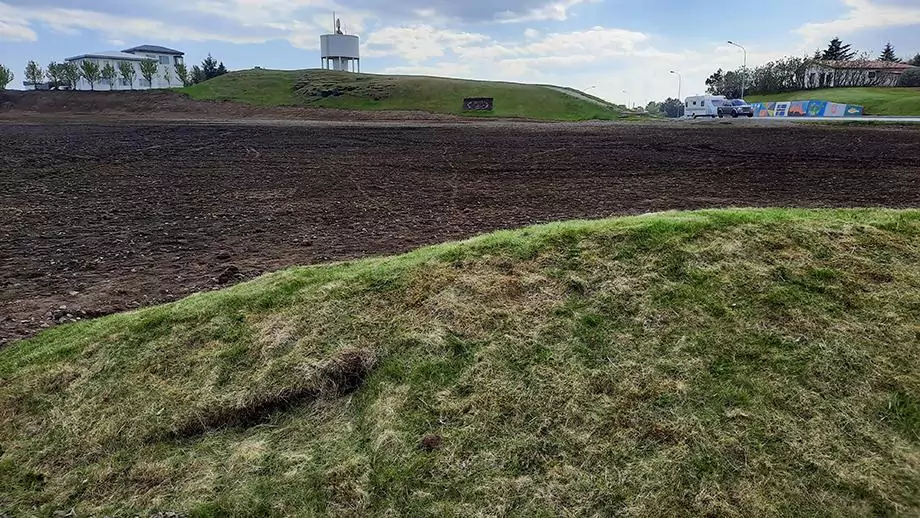
Open field bisecting parts of the town
photography by: Omri Westmark
Local Icelanders often joke that the only affordable commodities in Iceland are electricity and water while pretty much anything else costs a fortune. Being significantly more expensive than most other destination worldwide made the country a camper van powerhouse, as many of the visitors who wish to minimize their accommodation expanses opt for recreational vehicles as a cheap alternative for hotels.
Nestled on the outskirts of downtown Höfn, the town’s campsite (Open from the 15th of April to the 30th of September) doesn’t only serve as an inexpensive gateway to explore Höfn and its mesmerizing surrounding natural sites, but also offers its own spectacular scenery. Several picnic tables across the site are bestowed with expansive panoramic views of Hornafjörður lagoon alongside tens of snow-capped mountains. If you aren’t on a low budget, the camping site also includes an upscale option of private cabins, known as Höfn Cottages.
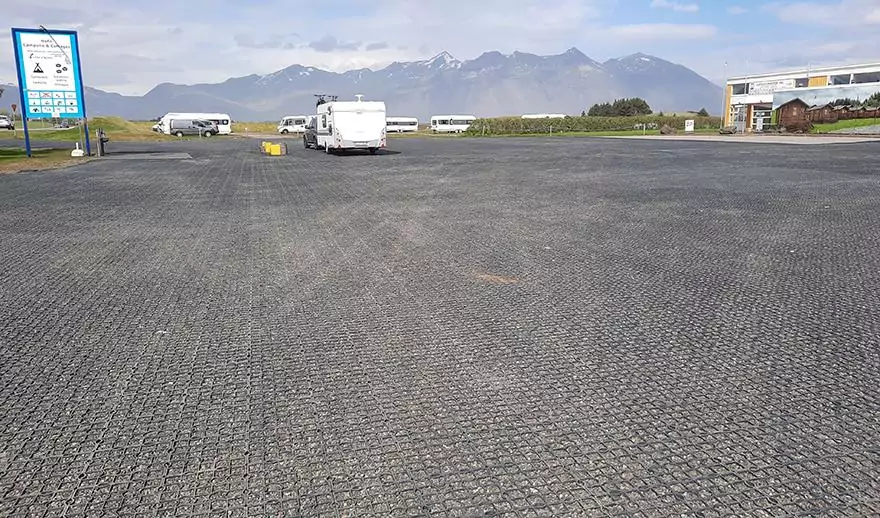
The campsite's main parking lot
photography by: Omri Westmark
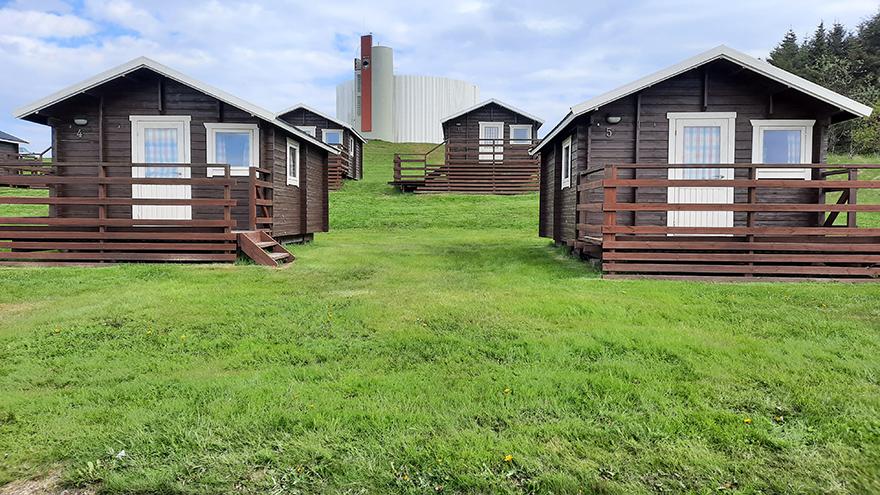
Höfn Cottages perching on a verdant meadow
photography by: Omri Westmark
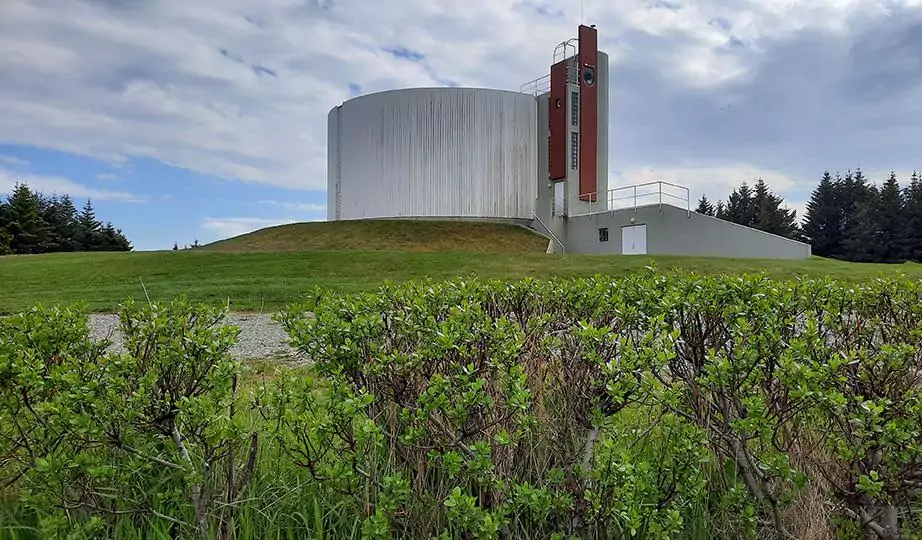
The nearby town water tower, which has been converted into a public hall
photography by: Omri Westmark
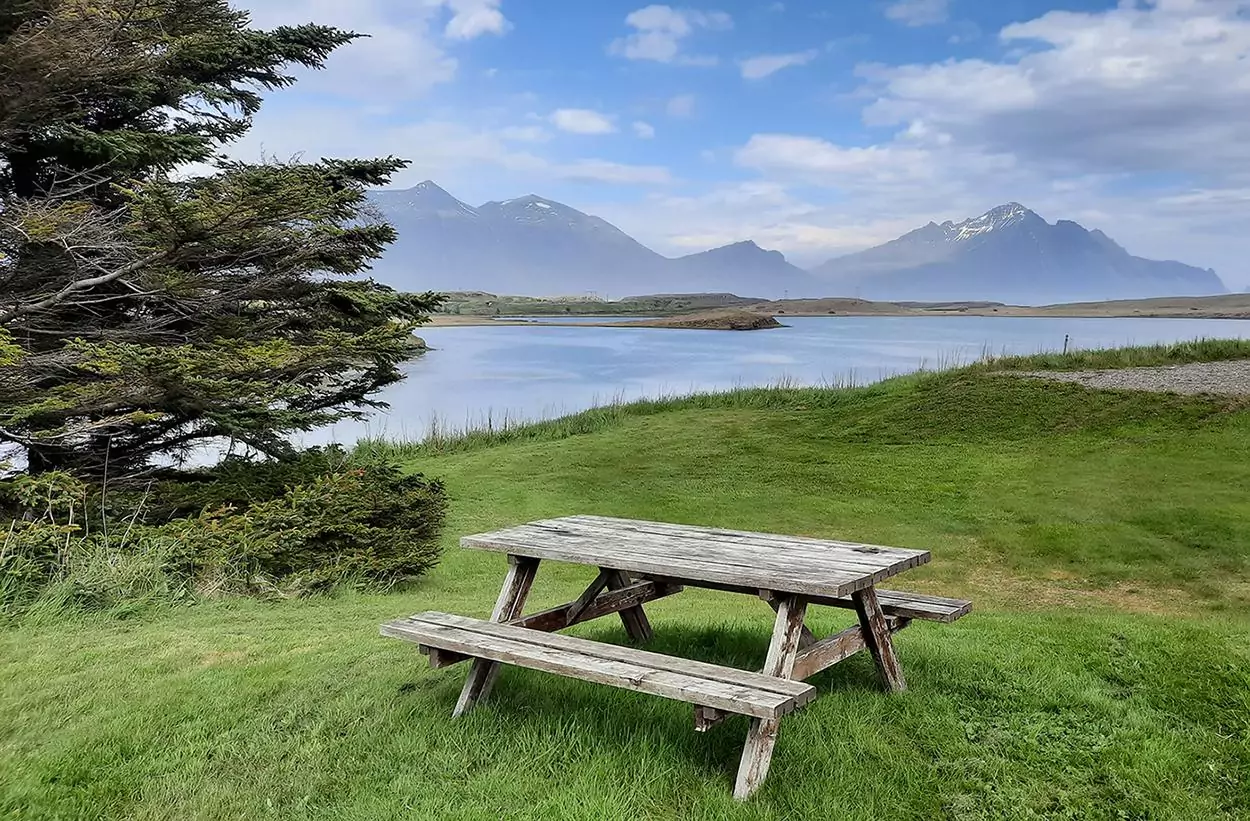
A picnic bench overlooking the snow-capped mountains around Höfn
photography by: Omri Westmark
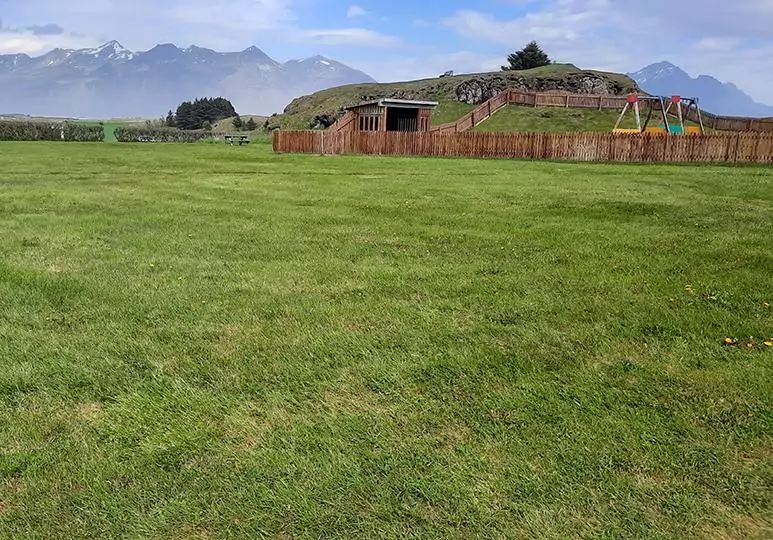
A playground next to a grassy knoll
photography by: Omri Westmark
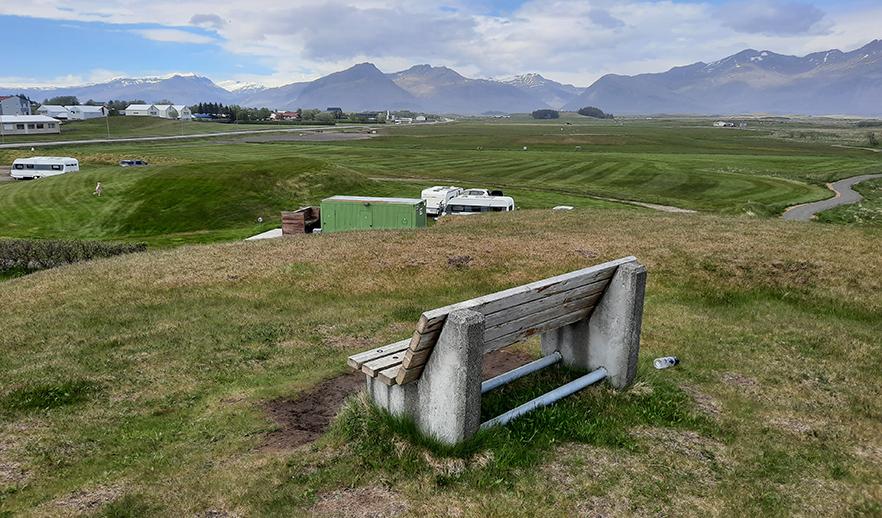
And as it turns out, this hill offers stunning views
photography by: Omri Westmark
As you can imagine, the vast majority of Höfn consists of newly built single homes sprawling over a vast grassland. The residential area around Norðurbraut and Hólabraut streets might be utterly mundane, however it also provides an authentic glimpse of Höfn, and by large extent, towns of its type across the country. Both Norðurbraut and Hólabraut are practically the same street with only a dead end separating between the two. Among the points of interest along the way are a verdant mound on the beginning of Hólabraut St., a modern style turf roofed building in Norðurbraut and the town’s largest accommodation complex, the architecturally modern Hótel Höfn, which is slightly further southwards.
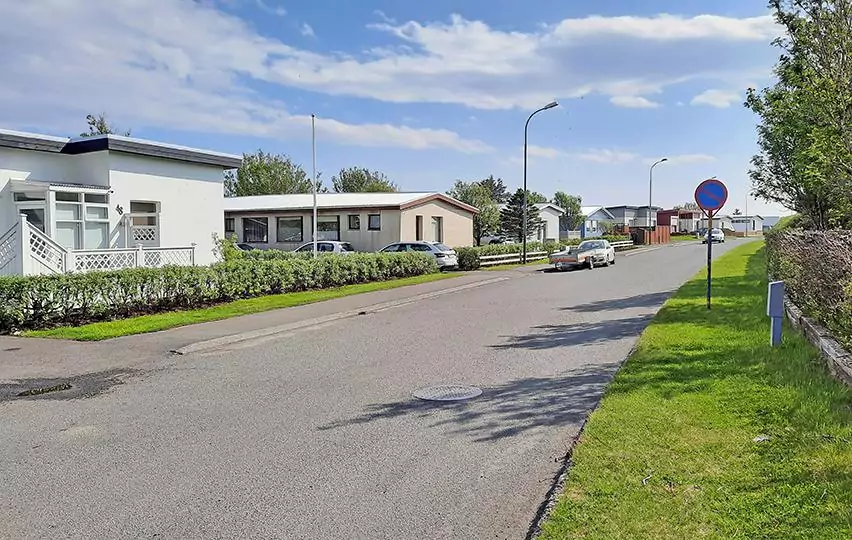
A typical sight of Höfn townscape
photography by: Omri Westmark
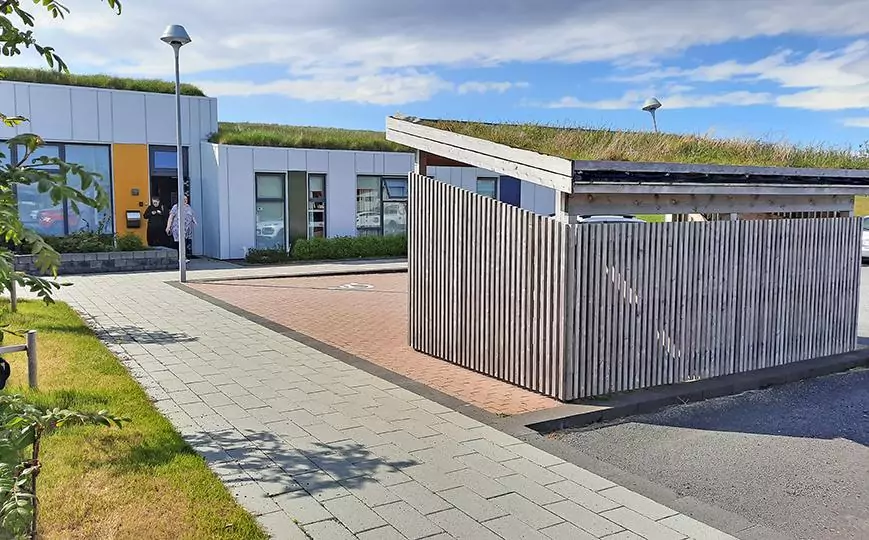
A modern counterpart of Iceland's renowned turf roofed buildings
photography by: Omri Westmark
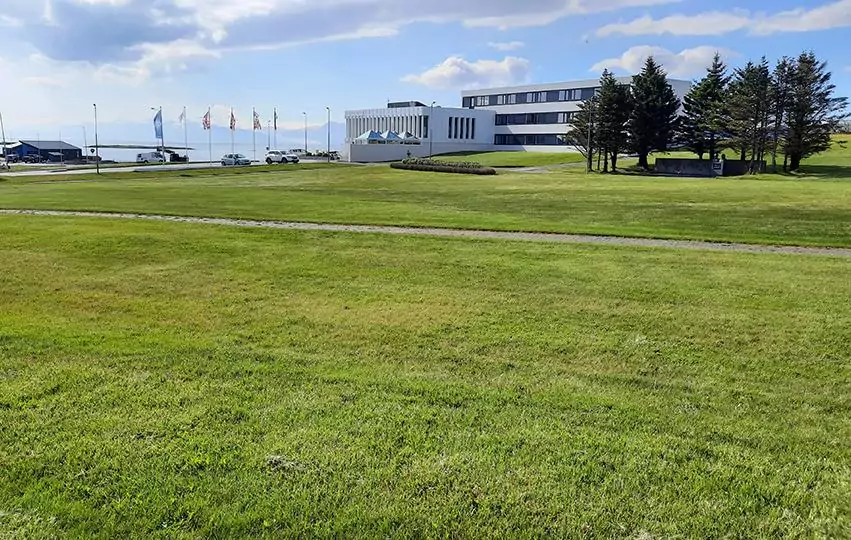
The largest hotel across town, Hótel Höfn
photography by: Omri Westmark
Located in front of the aforementioned Hótel Höfn, Hafnarkirkja is the town’s main religious building and one of its most iconic monuments. The church was constructed in 1966 following decades of debates and delays. Designed by the locally renowned architect, Ragnar Emil, the modern-style church can accommodate about 200 worshipers at its nave, a whopping 10 percent of the entire town.
Interestingly, several international artists took part in its construction, including the stained glass that were designed by María Katzgrau from Germany and the pipe organ, created by the Danish craftsman P. Bruhn.
Facing the church is a local cemetery which was built prior to the church itself, and for years now serving as the municipal graveyard.
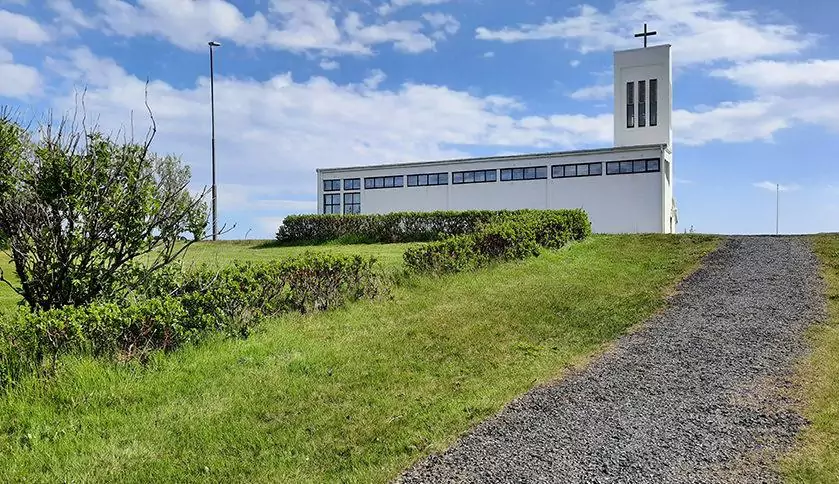
Hafnarkirkja's northern facade
photography by: Omri Westmark
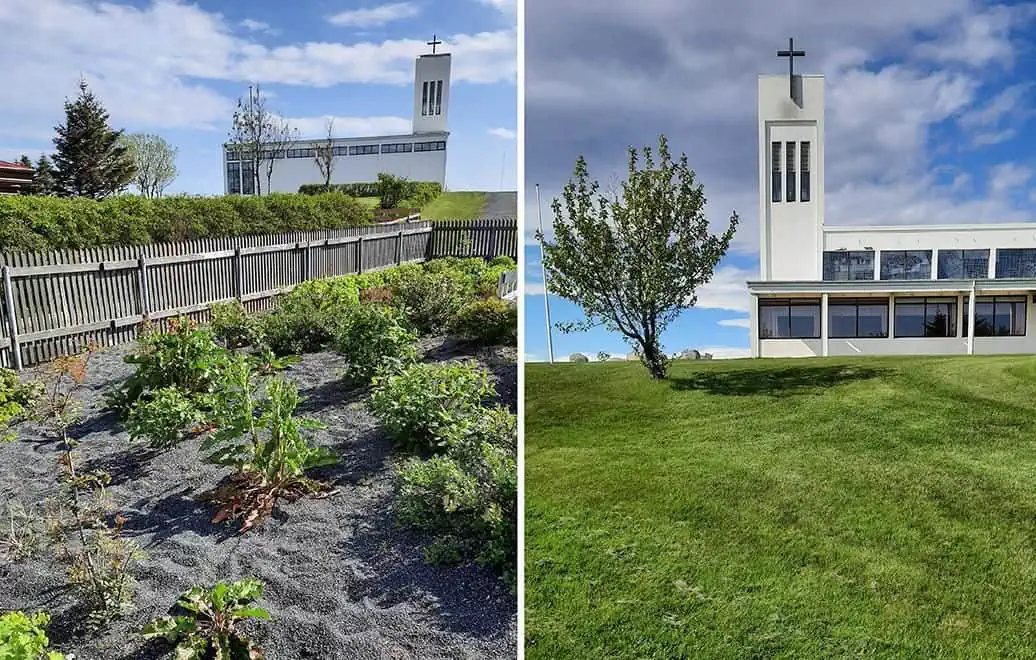
The church lies amid a spacious lawn with gardens and occasional trees
photography by: Omri Westmark
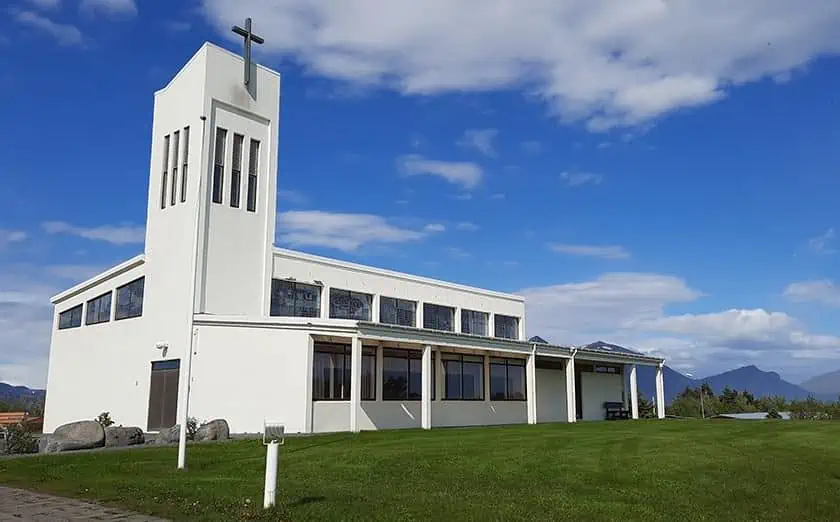
The church's main facade
photography by: Omri Westmark
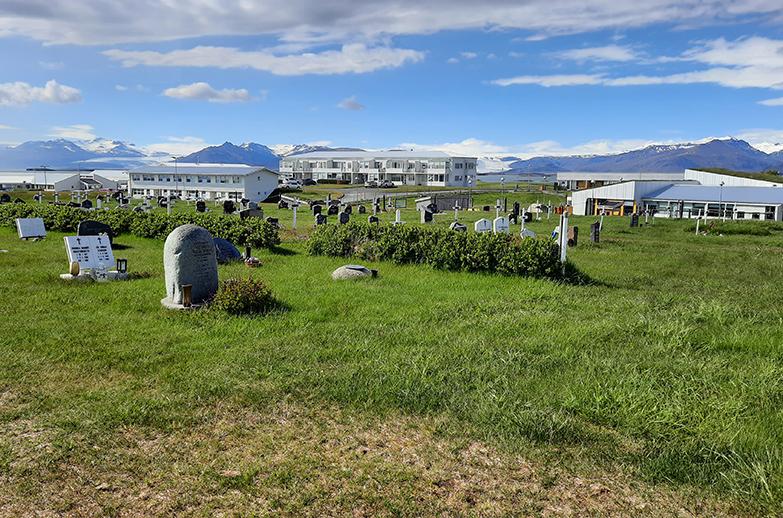
The adjacent cemetery
photography by: Omri Westmark
Officially becoming a town as recently as in 1988, Höfn is continuously inhabited for merely a little more than a century. Despite its relatively short history, Höfn has an impressive old town center, chockfull of adorable timber houses, some of which bear an interesting story to tell, including a music school where entire generations of local talented artists were educated.
Like Höfn’s modern center, the old town lies along both sides of Hafnarbraut Street, which ends at the harbor, where most of the restaurants and shops at this district are clustered.
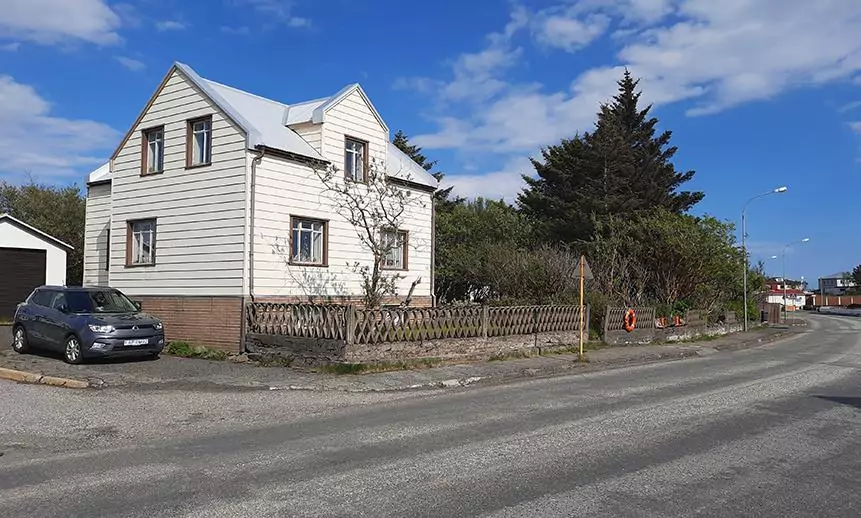
A charming wooden house
photography by: Omri Westmark
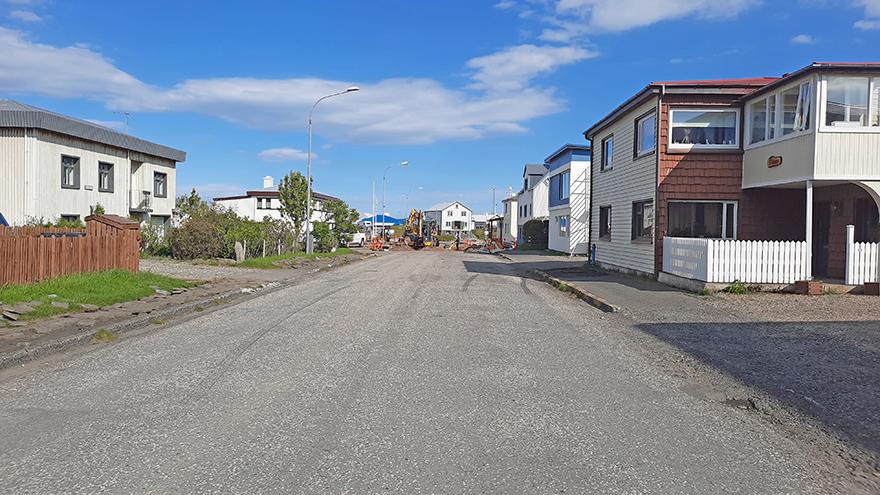
Hafnarbraut Street's segment of the old town
photography by: Omri Westmark

A medley of old timber houses differentiates this district from the rest of town
photography by: Omri Westmark
Relative to its miniscule size, Höfn boasts an impressively large number of dinning options, popular among locals and foreigners alike. Residing in the town’s oldest building that dates back to 1897, the Otto Matur & Drykkur Restaurant offers a plethora of typical Icelandic eats, all of which are based on locally sourced products.
Among the mouthwatering dishes you can find here are freshly caught grilled salmon, duck leg with semi-sweet sauce, sheep loins accompanied with vegetables and perhaps the restaurant’s flag dish, a scrumptious lobster soup. As one can imagine, the place’s interior was adjusted to fit its modern cuisine, with clean and tidy Nordic style design being applied for the whole space.
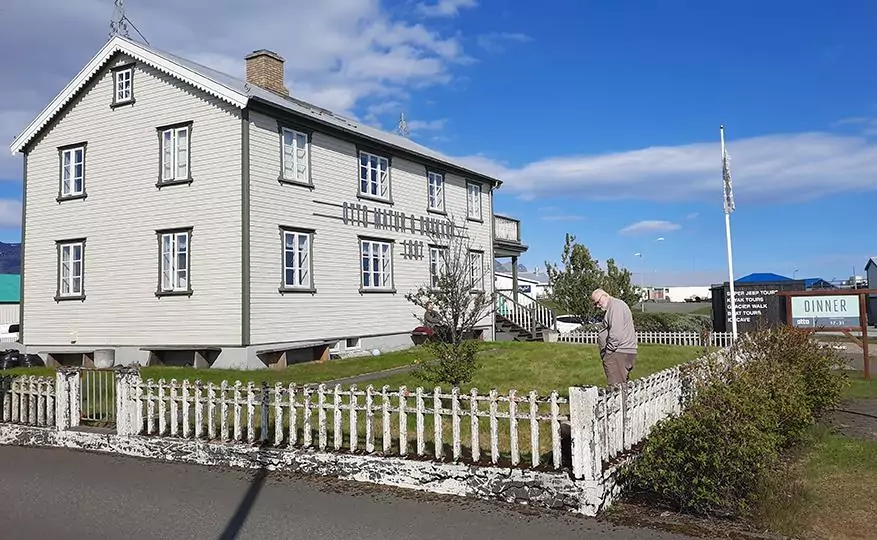
The oldest house in Höfn, currently hosting the Otto Matur & Drykkur Restaurant
photography by: Omri Westmark
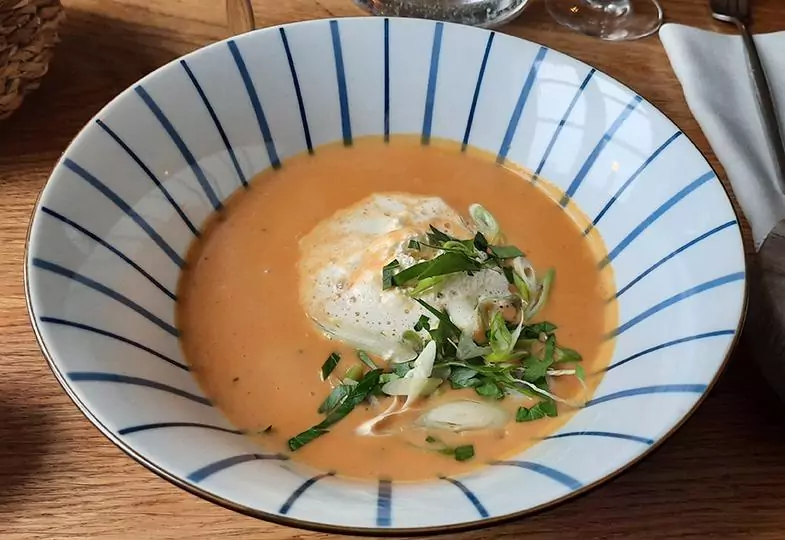
The restaurant's famed lobster soup
photography by: Omri Westmark
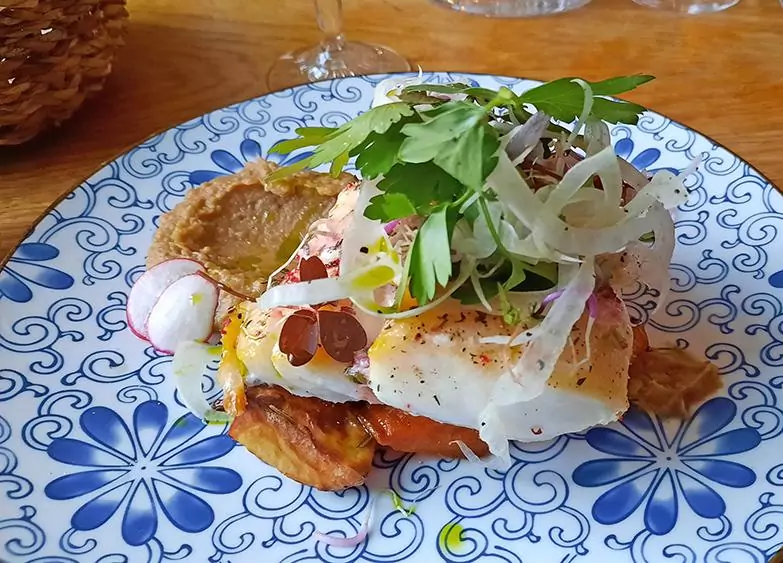
A smoked cod dish garnished with leaves and accompanied with a celery puree
photography by: Omri Westmark
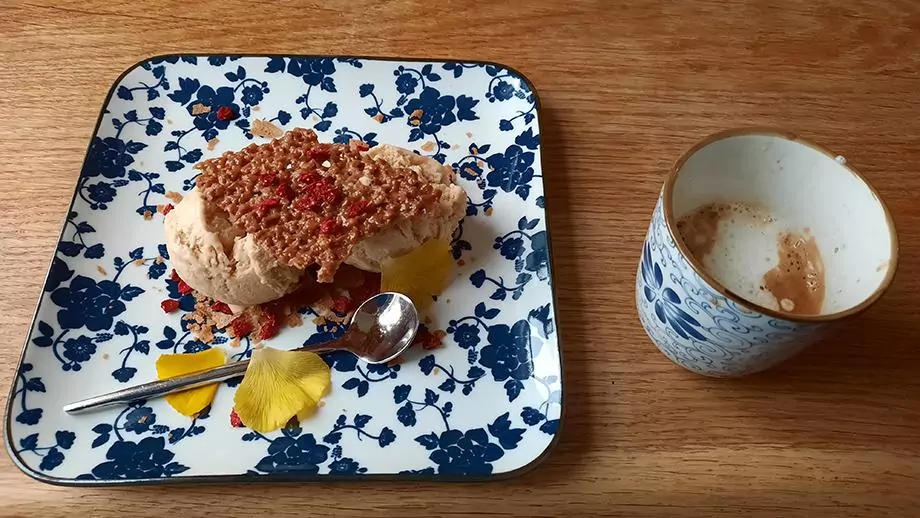
A whiskey parfait alongside the restaurant's excellent macchiato
photography by: Omri Westmark
As its Icelandic name suggests (Höfn literally translates to harbor in Icelandic), the town is centered around its harbor, which up until recently served as the main source of livelihood for its residents. As previously mentioned, the town is relatively new in local terms, with its oldest homes built at the beginning of the 20th century around the then newly created port. One of which, Gamlabúð, had several roles over the years, including a regional trade center, a grocery shop and nowadays, an information center for visitors.
While the harbor was originally built as a fishing port, as the tourism sector increasingly developed, recreational vessels such as yachts started docking at the premises as well. It is difficult to overstate the harbor’s importance for Höfn, and so, a stroll along its piers is far more than just picturesque, offering a glance into the town’s beating heart, where the sight of fishermen unloading their precious daily catch can be witnessed almost all year round. For those of you who come in July, the town hosts the Lobster Festival around the harbor, celebrating Höfn’s rich fishing legacy.
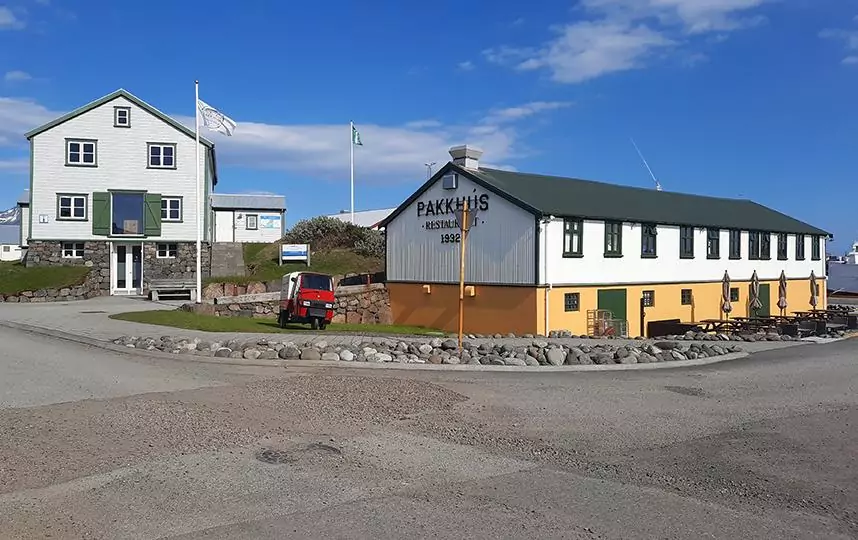
Gamlabúð, one of Höfn's oldest buildings, and Pakkhús, a locally renowned seafood restaurant
photography by: Omri Westmark
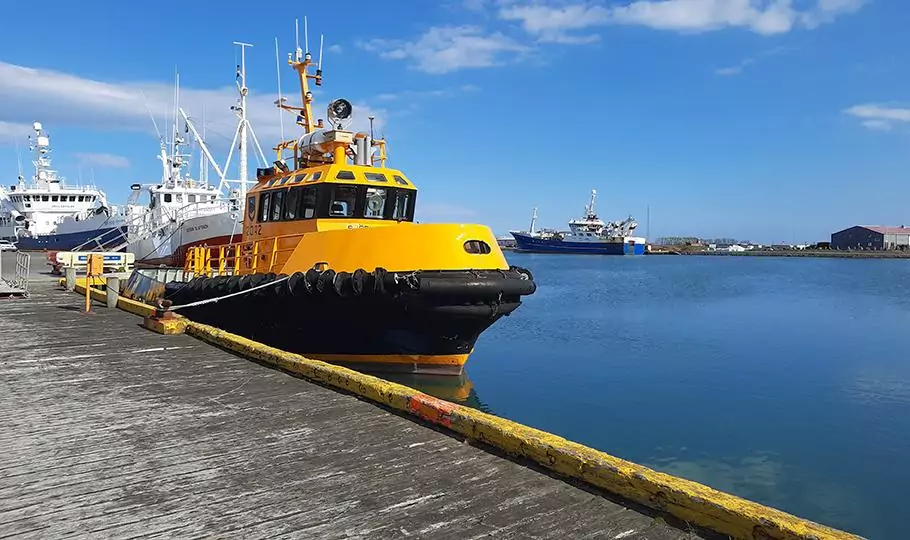
Fishing vessels docking at the harbor
photography by: Omri Westmark
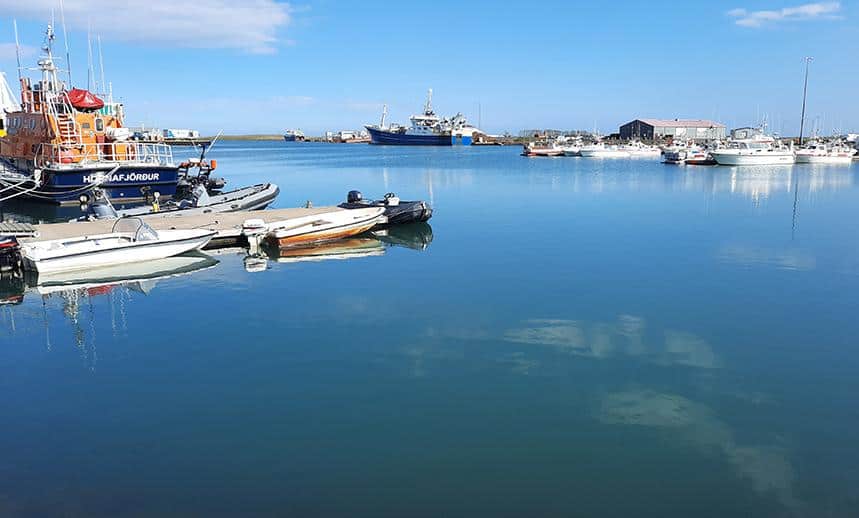
Fishing boats alongside yachts
photography by: Omri Westmark
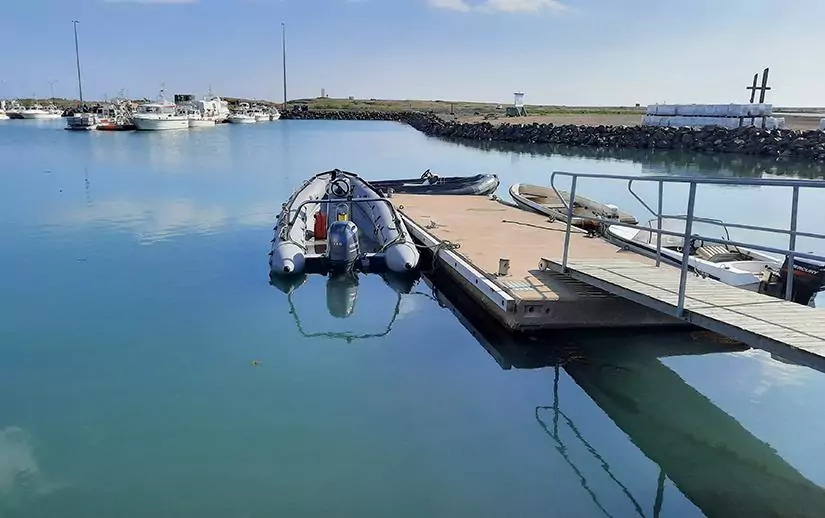
One of the harbor's docking piers
photography by: Omri Westmark
Engulfing the town on three sides, Hornafjörður (Fjord of the Horns) is usually mistaken with a fjord because of its name, as this body of water is actually a freshwater lagoon, formed by glacial rivers from the nearby Vatnajökull. A series of esplanades and walkways offer a pleasant stroll along its coast.
In addition to the scenic views, the shoreline also has a myriad of interesting sites to explore, most notably a verdant headland, a boulder park and a monument dedicated to the town’s fishermen and fishing industry.
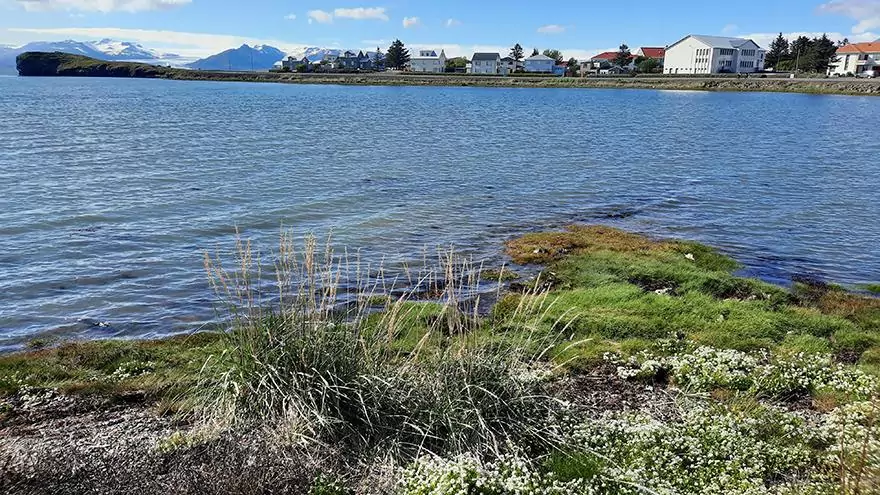
The scenic of views of Hornafjörður Lagoon and the town
photography by: Omri Westmark
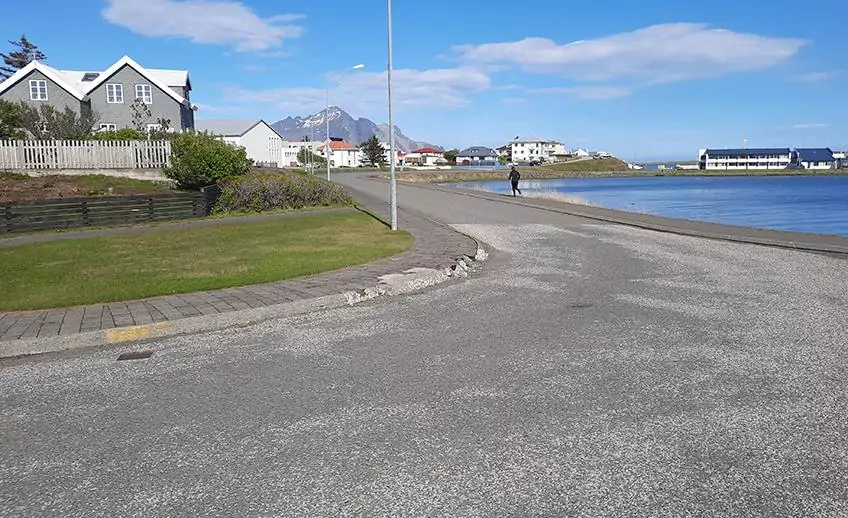
The esplanade along Hornafjörður
photography by: Omri Westmark

Höfn's verdant headland
photography by: Omri Westmark
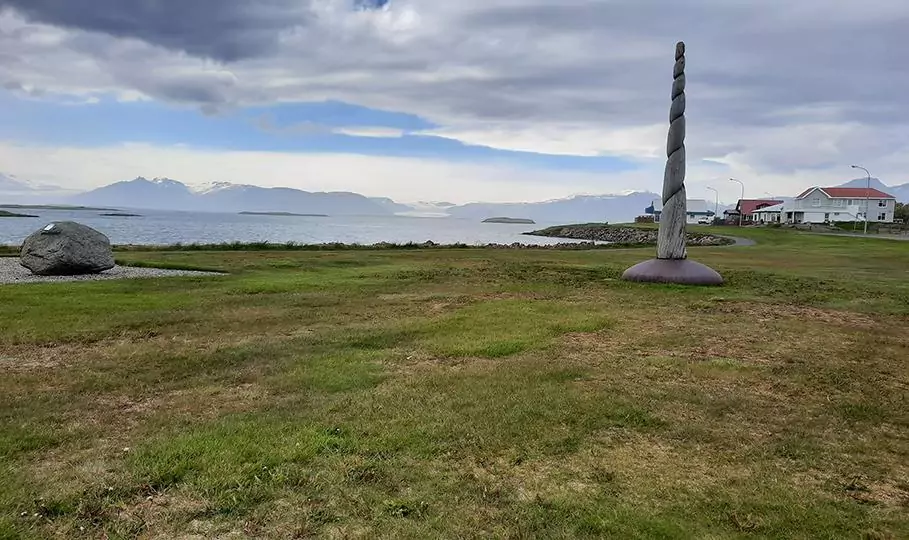
A sculpture adjacent to the boulder park
photography by: Omri Westmark